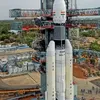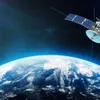ISRO aborts moon mission, calls off Chandrayaan-2 launch over technical snag
ISRO calls off India’s most prestigious moon mission, Chandrayaan-2, after discovering a technical snag in launch vehicle system one hour before liftoff. A revised schedule will be announced soon.
Barely a week before the 50th anniversary of the Apollo moon landing, ISRO was set to take a giant leap for India by launching Chandrayaan-2, its second mission to the moon. However, the launch was called off just a few minutes before the 2.51 am lift-off from the Satish Dhawan Space Centre (SDSC) in Sriharikota, Andhra Pradesh, due to a technical snag.
“A technical snag was observed in launch vehicle system at 1 hour before the launch. As a measure of abundant precaution, #Chandrayaan2 launch has been called off for today. Revised launch date will be announced later,” ISRO tweeted.
According to a news agency, the snag was noticed when the cryogenic fuel was being loaded. A new launch scheule will be announced after the rocket is emptied of fuel and investigated.
_(1)1563090042409.jpg?fm=png&auto=format)
The Geosynchronous Satellite Launch Vehicle Mark III, nicknamed Baahubali, is seen at the second launch pad ahead of the launch of Chandrayaan-2. ISRO's second moon mission aimed to land a robotic rover on the moon. Image: PTI
A successful Chandrayaan-2 launch would have made India the fourth country to soft land on the lunar surface after Russia, the United States, and China, putting it in an elite space club.
The three-component spacecraft, weighing 3,850 kg and comprising an orbiter, lander, and rover, aimed to go where no other country has gone: the lunar south pole. The Rs 978 crore Chandrayan-2 mission was riding on the Geosynchronous Launch Vehicle GSLV-MkIII, and was scheduled to take 54 days to accomplish the task of landing on the moon through meticulously planned orbital phases.
ISRO Chairman K Sivan earlier called Chandrayaan-2 “the next leap in technology”. President Ram Nath Kovind was in Sriharikota for the launch.
Going where no one else has
The spacecraft aimed to land around September 6, and explore a region that no other country has done so far. This would help enhance the world’s understanding of the moon, and could lead to discoveries that will benefit India and humanity as a whole.
According to ISRO, the lunar south pole is intriguing as a large section of its surface cannot be seen when compared to the north pole. There is a possibility of the presence of water in permanently shadowed areas, and the region also has craters that are cold traps and containing a fossilised record of the early solar system.
ISRO’s latest space mission aimed to expand India's footprint in space, shed light on an unexplored section of the moon, enhance knowledge about space, stimulate advancement of technology, and promote global alliances.
The challenges in the moon landing
Chandrayaan-2 has three components - a lander named Vikram, an orbiter, and a six-wheeled rover named Pragyan, all developed by ISRO. These modules aim to analyse the moon’s surface and conduct scientific experiments. The instruments on the rover will observe the lunar surface closely and send back data, after which ISRO will carry out analysis of the lunar soil.
It has 13 payloads in total with eight of them in the orbiter, three payloads in Vikram, and two in Pragyan. Five payloads are from India, three from Europe, two from the US, and one from Bulgaria.
ISRO officials said the challenges involved in the moon landing were identifying trajectory accurately; taking up deep space communication; trans-lunar injection, orbiting around the moon, taking up soft landing on the moon surface, and facing extreme temperatures and vacuum.
The initial launch dates for the mission were between January and February, but ISRO postponed the date after Israel’s unsuccessful attempt to land on the moon.
In an earlier statement, an ISRO official said, “We saw Israel’s example and we don’t want to take any risk. Despite Israel being such a technologically advanced country, the mission failed. We want the mission to be a success.”
This year, India has planned 32 missions, including the "most complex" Chandrayaan-2 during 2019, the Indian Space Research Organisation (ISRO) said.
(Edited by Teja Lele Desai)










